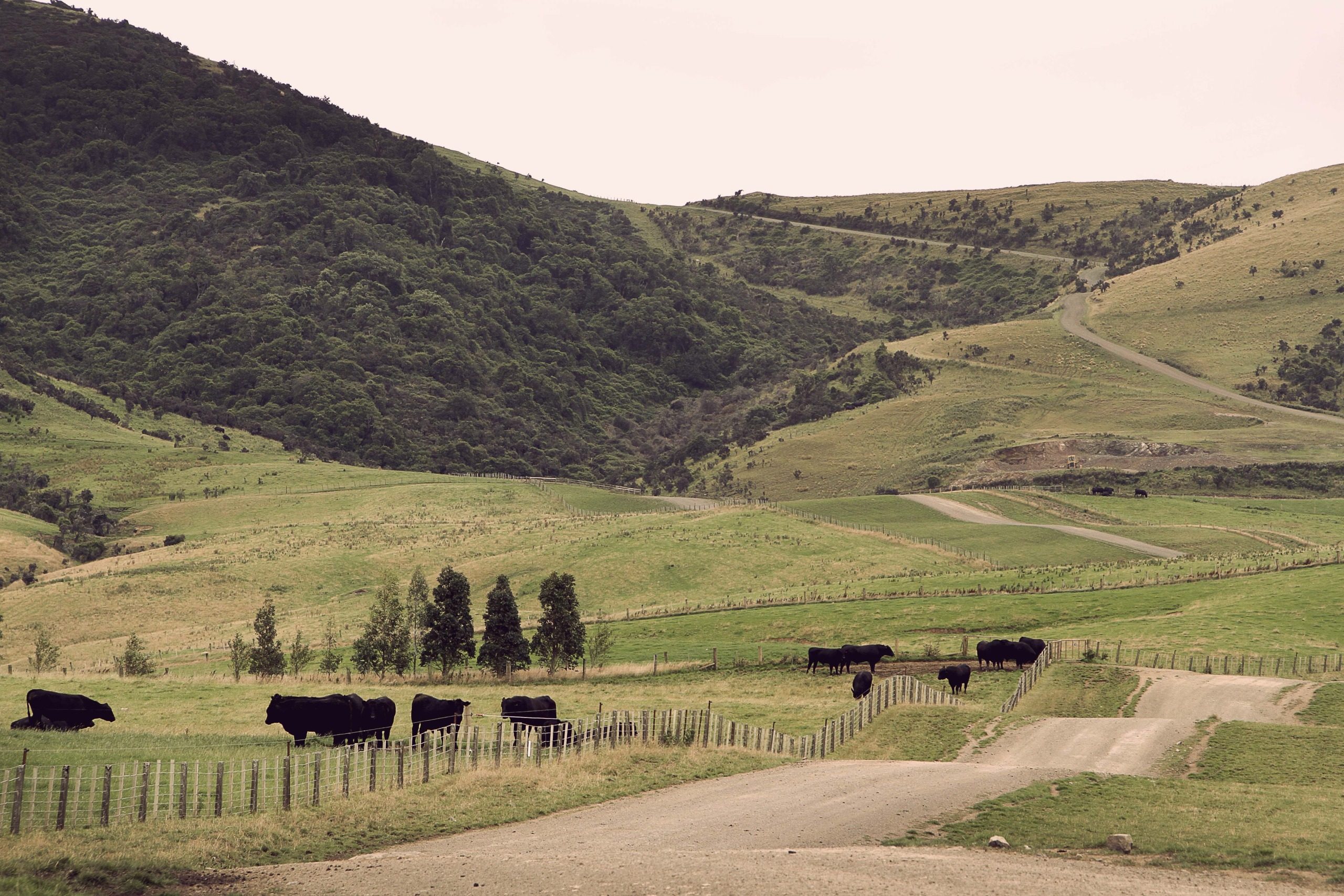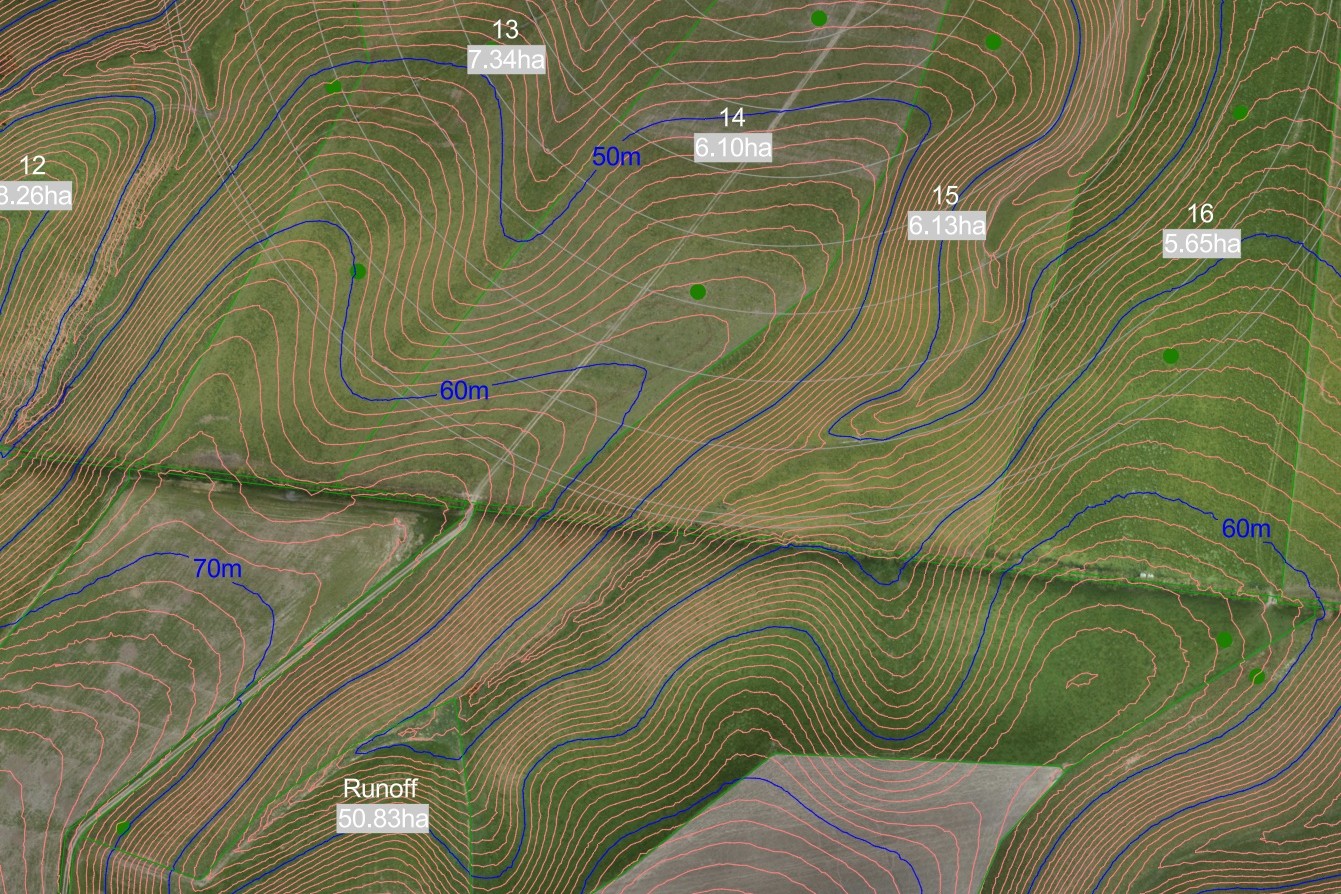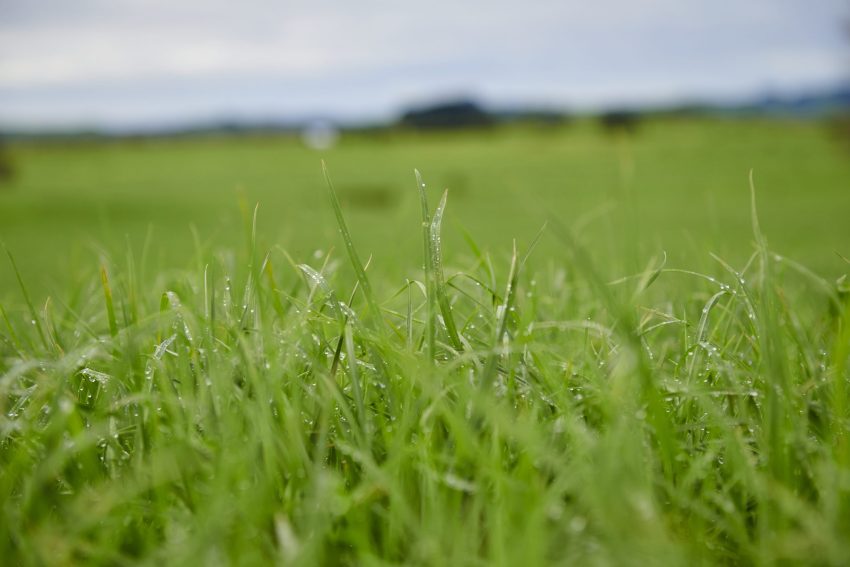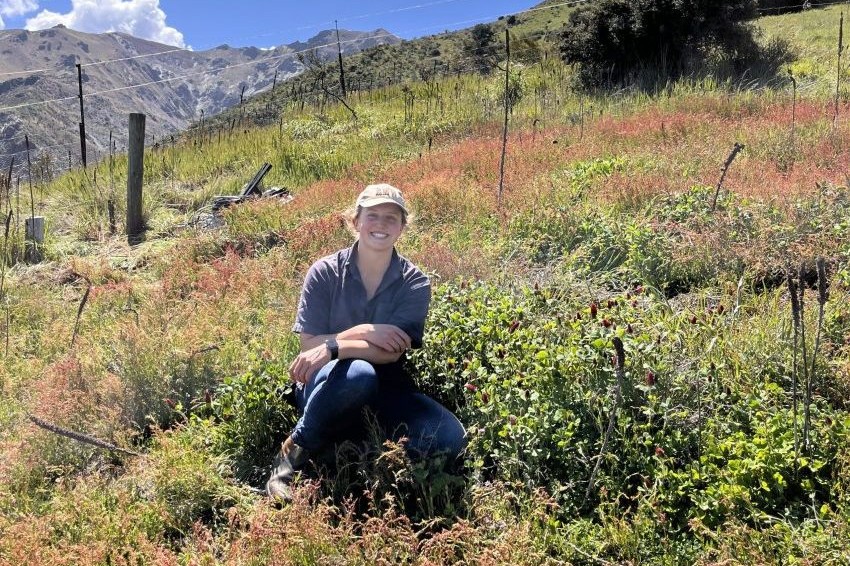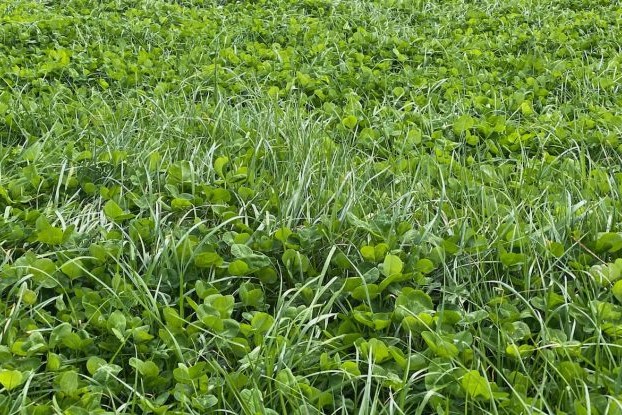A 60ha block of overgrown red clover was the catalyst to legume dominant pastures for cattle finishing at Mount Linton.
Mount Linton general manager Ceri Lewis says the block was direct drilled on a steeper part of the downlands in 2014 as a fail-safe forage for finishing lambs during dry summers.
“It was a straight red clover, and it grew exceptionally well but somehow we missed the boat with getting lambs on to it early enough and it got too long.”
Cutting it for balage was out of the question because of the steep country, so the possibility of grazing the crop with bloat capsuled steers was investigated. A stock and station technical rep told Ceri that the idea was a bad one, but he decided otherwise and went ahead.
After a gradual and cautious transition the Angus steers packed on liveweight over 12 weeks from mid-February until mid-May.
Over the first six week grazing rotation the steers achieved a daily liveweight gain of 2.75kg, and in the second 2.25kg which rounded out to a 12 week average of 2.5kg LW a day.
“It was phenomenal, most were more or less finished by the time they came off the clover.”
Red clover looked to be the answer for cattle finishing but changed animal health protocols in the United States market which the Mount Linton steers were contracted to, banned the use of bloat capsules which Ceri was not prepared to forgo in grazing red clover. However, the success of the one year trial convinced him of the need to increase the legume content of Mount Linton pastures.
That’s led to the establishment of a 680ha downland cattle finishing block sown out with Relish red clover (6kg/ha), Quartz white clover (4kg/ha), Tonic plantain (2kg/ha) and Eastern tall fescue (14kg/ha). Another 80ha has the same mix for growing out Mount Linton’s stud bulls. Ceri says the pastures are 60 to 70% clover dominant and puts the success of the legume down to the clover-friendly tall fescue. The fescue is sown at a relatively light rate and it’s growth pattern is such 60ha block of overgrown red clover was the catalyst to legume dominant pastures for cattle finishing at Mount Linton.
Mount Linton general manager Ceri Lewis says the block was direct drilled on a steeper part of the downlands in 2014 as a fail-safe forage for finishing lambs during dry summers.
“It was a straight red clover, and it grew exceptionally well but somehow we missed the boat with getting lambs on to it early enough and it got too long.”
Cutting it for balage was out of the question because of the steep country, so the possibility of grazing the crop with bloat capsuled steers was investigated. A stock and station technical rep told Ceri that the idea was a bad one, but he decided otherwise and went ahead. After a gradual and cautious transition the Angus steers packed on liveweight over 12 weeks from mid-February until mid-May. Over the first six week grazing rotation the steers achieved a daily liveweight gain of 2.75kg, and in the second 2.25kg which rounded out to a 12 week average of 2.5kg LW a day.
“It was phenomenal, most were more or less finished by the time they came off the clover.”
Red clover looked to be the answer for cattle finishing but changed animal health protocols in the United States market which the Mount Linton steers were contracted to, banned the use of bloat capsules which Ceri was not prepared to forgo in grazing red clover. However, the success of the one year trial convinced him of the need to increase the legume content of Mount Linton pastures.
That’s led to the establishment of a 680ha downland cattle finishing block sown out with Relish red clover (6kg/ha), Quartz white clover (4kg/ha), Tonic plantain (2kg/ha) and Eastern tall fescue (14kg/ha). Another 80ha has the same mix for growing out Mount Linton’s stud bulls. Ceri says the pastures are 60 to 70% clover dominant and puts the success of the legume down to the clover-friendly tall fescue. The fescue is sown at a relatively light rate and it’s growth pattern is such that it allows the clover to establish.
“It’s different from the standard pastures we’ve had in the past. They were heavy in ryegrass and within a couple of years they usually smothered out the clover.”
This year the Eastern tall fescue seed was in short supply so Quantica was used instead in the spring established pastures.
“It’s looking good, perhaps even better than Eastern.”
A watchful eye is kept on pasture cover during the transition of the cattle.
He would like the cattle to go on to a reasonable cover for the first spring graze of about 2500kg DM and they come off at 1500kg DM.
Then they try to keep covers as low as possible in the 2500-2700kg DM range to maintain quality which is the key to liveweight gain.
Watching for bloat
Cattle are observed for possible signs of bloat, but there’s been very few cases – and that’s without bloat oil in the troughs.
“During spring we might take an animal off twice a week but generally speaking we’ve had few if any problems.”
About 1400 R2 steers graze the downland blocks from mid-September until May. The average daily growth rate up until Christmas is about 2kg, and after that about 1kg a day. Over the last couple of years the R2 steers averaged about 1.4kg a day over the seven months of grazing.
The challenging time is through January-March and this year they managed 950g/day.
“The secret is keeping the pre-graze covers below 2700kg DM.”
Inspired by the growth results on the downlands, Ceri was keen to replicate the legume pasture roll out on the hill country. A further impetus was joining the Red Meat Profit Partnership (RMPP) Southland Hill Country group which provided expertise and encouragement to pursue clover-dominant pastures. In autumn 2019 a 40ha steep northerly facing block was sown out in red, white and sub clover. The block was left to seed over summer then cattle grazed it over autumn.
Another block of 260ha was established in spring 2020, and a further 860ha will be sown this spring.
These new hill legume dominant pastures are primarily for lamb finishing, with cattle being used to strategically graze them during the establishment phase. However, the opportunity to finish cattle on this area in the future is a real possibility.
Reducing the amount of grass seed and upping the clover content of Mt Linton pastures will continue, Ceri says.
“We’ll keep doing it on both our downlands and hill country because we’re confident it will have a big impact on animal performance.”
Top tips for legume-rich pastures
- Don’t be afraid. Have the confidence to lower the grass rate and up the legume content.
- Start with a small block.
- Establish legume with compatible grass species. At Mount Linton, tall fescue has worked well, it’s slower growth rate giving the red and white clover plenty of time to get a foothold. Also timothy, established on the downlands has a similar growth profile.
- Take the transition slowly and use bloat oil in the troughs for the first few weeks. Once cattle are used to the clover the bloat oil can be stopped.
- Keep an eye on the cattle especially in the early spring, and remove any with signs of bloat. If you find repeat offenders, remove them completely.
- Graze new pastures with young cattle for the first few rotations as they don’t graze as low and damage the young clover.

